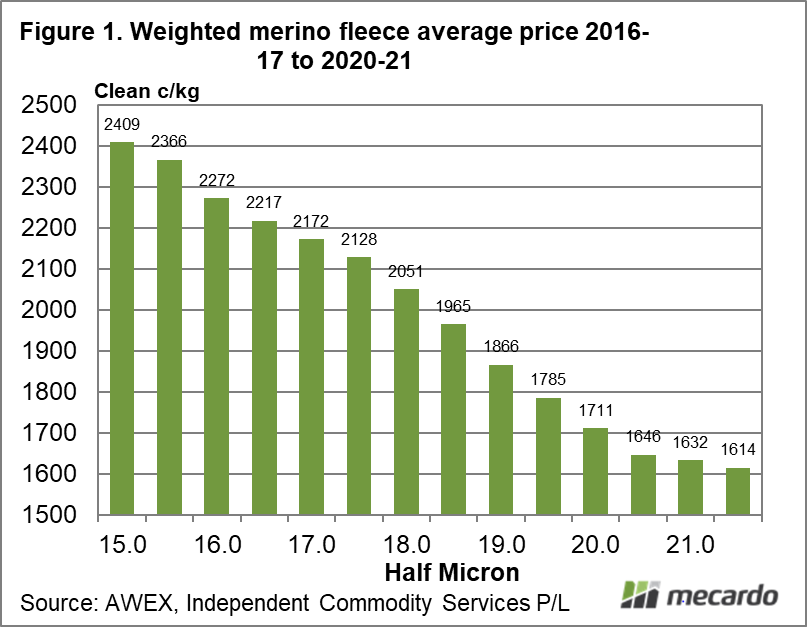For many wool growers our understanding of staple strength and its impact on prices for merino wool is anchored in the 1990s and early 2000s when premiums and discounts for this characteristic were very large. To perhaps help reset this anchor point this article looks at staple strength premiums and discounts during the past five seasons.
Last month Mecardo looked at staple strength for 17 micron, in response to a question about whether there is a critical staple strength level with regards to price and last March we looked at long term trends in staple strength and length price effects. The March article showed how the effect of strength and length (premiums and discounts) had shrunk appreciably from the levels present in the 1990s and early 2000s.
In this article annual prices for a range of merino fleece by micron and staple strength (filtered to reduce the effect of other characteristics) have been calculated to allow the effect of staple strength to be established. These annual premiums and discounts were then averaged across five seasons (weighted for volume).
Figure 1 shows the average weighted price across the five seasons to 2020-21 by half micron for eastern merino fleece within a length range of 70-95 mm, with vegetable fault less than 1.6%, a yield above 64%, P certificates only, point of break in the middle between 20 and 80 and no subjective fault such as cott or colour. The average staple strength tends to be around 38 N/ktx for this series.
In Figure 2 the effect of staple strength, compared to a base fleece price with a staple strength of 35 N/ktx, is shown for 19 and 21 micron fleece. There are a couple of points to note. Firstly discounts below 20 N/ktx and premiums above 40-45 N/ktx level out. For 21 micron there are few premiums for high staple strength at all, a feature which applies to the broader merino categories generally. The second point to note is the relatively small premiums and discounts recorded. They are not very large.
Figure 3 looks at staple strength premiums and discounts for 15 and 17 micron fleece wool. Premiums stabilise about 45 N/ktx and for 17 micron the discounts also stabilise around 20-25 N/ktx. In essence staple strength is important from around 20 through to 40 N/ktx, above and below which its importance fades away. The effect of staple strength is larger than for the 19 micron category, but still quite moderate by the standards of the 1990s.
What does it mean?
Staple strength is nowhere near the terror of the market it has been in the past although a staple strength around 38 N/ktx tends to be the threshold for access to RWS premiums and some specialist Italian contracts in the current market, but achieving these prices depends on more than staple strength. There are some implications for breeding indices and the value put on staple strength due to the lesser impact on price when staple strength exceeds the 20 to 40 N/ktx range.
Have any questions or comments?
Key Points
- Staple strength premiums and discounts have been generally small in recent seasons for most micron categories.
- Staple strength tends to have most of its effect between 20 and 40 N/ktx, with the price effect fading away above and below this range.
- For broader merino wool there are few staple strength premiums.
Click on figure to expand
Click on figure to expand
Click on figure to expand
Data sources: AWEX, ICS, Mecardo




